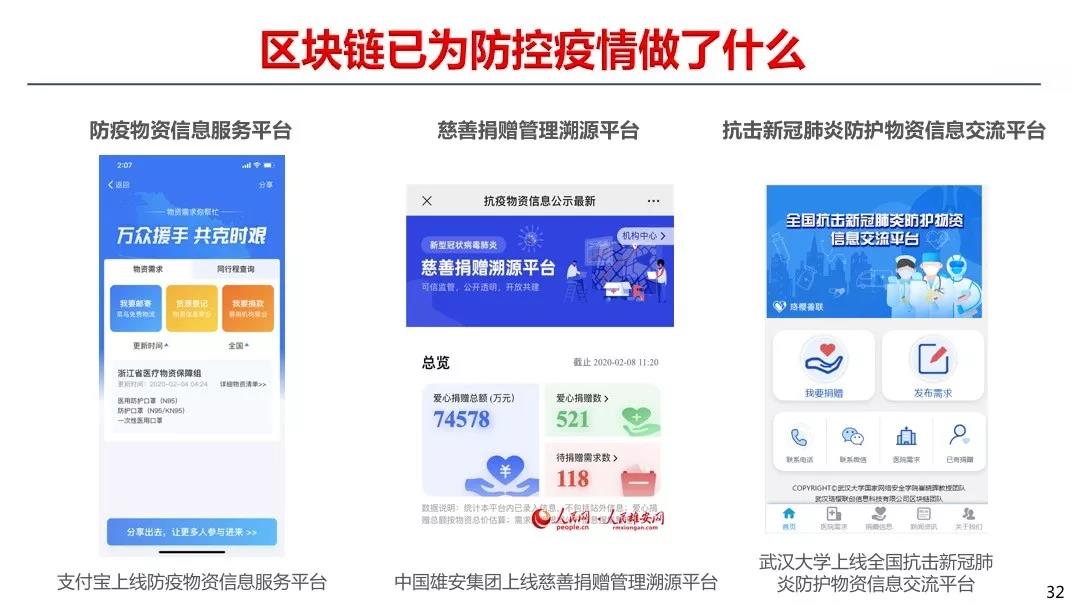Xinbaoyuan He Baohong: Under the epidemic, blockchain helps build public welfare platforms
Source of this article: Communication World
Author: Lu Meng
View sharing: He Baohong, Director of Cloud Computing and Big Data Institute, China Academy of Information and Communications Technology
Blockchain, as an important breakthrough in independent innovation of core technologies, is a national strategic technology juxtaposed with 5G, artificial intelligence, and big data. At present, affected by the new crown epidemic, the whole society is doing quarantine. In order to control the epidemic and ensure the isolation of personnel, there must be data flow. He Baohong said: "After the blockchain, or in terms of preventing and controlling the epidemic, Promising. "
- Government and Enterprise Watch | If the Wuhan epidemic crisis has been used for blockchain
- Samsung keeps cryptocurrency features in Galaxy S20 phones
- U.S. court extends Gram token sales ban, promises end-of-April verdict
Blockchain is the underlying technology of Bitcoin. It has four basic characteristics: all open source, global distribution, no responsible party, and no external credit endorsement. Blockchain originates from Bitcoin and is higher than Bitcoin. It has become a platform construction that can not only support digital currencies and digital assets, but also serve people's livelihood, public welfare, and medical health.
In He Baohong's view, blockchain can help public welfare in 4 ways. First, the use of blockchain for public welfare can make public welfare data more transparent and credible, such as the traceability of donations. Second, from the perspective of personnel, the blockchain keeps participants in awe because the data is public. Everyone can see that it is tamper-proof, traceable, open and transparent; thirdly, from the perspective of the organization, it can make public welfare organizations operate more efficiently, digitally operate, and digitally manage; fourthly, from a regulatory perspective, Enable regulators to follow up in a timely manner.
At present, the blockchain has been partially applied to public welfare, and has contributed to the prevention and control of the epidemic. For example, Alipay has launched an information service platform for epidemic prevention materials; the charity donation traceability management platform of the charity donation management and rescue team launched by China Xiong'an Group can see where materials come from, where and where there is a shortage Materials, etc .; and Wuhan University in the epidemic area, the nationwide information exchange on protection against new crown pneumonia was launched to facilitate everyone to better enter and exchange better information. Blockchain has played a positive role in preventing and controlling the epidemic.

He Baohong added: "In fact, there are already a number of projects for the charity of blockchain in our country, including the China Social Assistance Foundation of the Angel Charity Program, the easy storage of Bafang Interactive Alipay, and the donation of charity treasures. Apply blockchain technology to our public good to improve the traceability, transparency, and credibility of our public good. "

There is still a lot of space for blockchain to help public welfare information, and it is still in its infancy. In the future, blockchain can make some changes to the public welfare model. He Baohong said: "For example, our donors, non-profit organizations and recipients have joined a non-profit platform. This non-profit platform can even be built and operated by third parties. In this way, we all improve the public welfare platform. To carry out related activities based on the blockchain non-profit platform. Instead of doing things around non-profit organizations and making everyone open and transparent, this is a completely imaginable thing. "
In addition, the blockchain can also help the external supervision of public welfare information, especially the regulatory issue. It is often difficult for the masses to monitor relevant information. The important reasons are opaque data, slow data transmission, or problems with the data itself. You can use the blockchain to form a public interest alliance chain, so that everyone can put related data on the chain, and every donor, recipient, public interest organization, and regulatory agency can see this ledger to achieve Trustworthy and transparent.
Blockchain can also be applied to smart contracts to improve the efficiency of resource allocation. At present, the process of issuing donated resources is too complicated, and it can be basicized and digitalized. If smart contracts are introduced, it can improve the efficiency of related contract execution and the internal work efficiency of the organization.
Finally, He Baohong said that the use of digital technology to enhance the credibility of public welfare organizations is not only the credibility of public welfare organizations, but also the trend of thought of the whole society and the tradition of the whole society. Third-party authority authorities need to use digital technology, especially blockchain technology, to improve their transparency and credibility. Blockchain technology has many advantages such as tamper resistance, non-repudiation, traceability, information sharing, etc., and is very suitable for public welfare organizations. Blockchain-based public welfare platforms are a very important development direction, and all public welfare benefits humanity.
We will continue to update Blocking; if you have any questions or suggestions, please contact us!
Was this article helpful?
93 out of 132 found this helpful
Related articles
- "The Secret History of Bitcoin": What exactly happened to the bitcoin hard fork panic?
- Cryptocurrency derivatives exchange Deribit completes new round of financing, valued at billions of dollars
- Liquidation of $ 629 million! What happened behind Bitcoin's early morning diving of $ 850?
- Imagine 2030: The dusk of fiat money?
- Mining life and death situation: Epidemic or advance overdraft halved, 2020 will usher in an industry inflection point
- Perspective on Blockchain Funds Established by 12 Listed Companies: 60% Undisclosed Progress, Wanxiang and Kodak Active Investment
- Forbes releases list of top 50 blockchains, Baidu, Ant Financial, and Tencent are on the list






